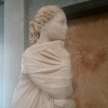The Saintly Children of the Blood Libel
When Religion Goes Awry

Little Hugh of Lincoln would have passed through history unnoticed if it wasn’t for his death. His death, as described a bit in the reading that started us off, was attached to the blood libel. Soon, a cult sprang up under his name, making him Little St. Hugh of Lincoln, whose gravesite sees many pilgrims. But what is the blood libel?
For as long as Jewish faith has existed, they have been treated as outsiders and oppressed by different groups of people that still continues to this day. But a ghost that has haunted them since the 400s in BCE, is the blood libel. The blood libel is a lie that has to continue, that during Passover to make their matzo bread, the blood of children was needed to stop the bread from rising; along with well-poisoning, but the blood of children is one accusation that was more prominent. This has haunted the Jewish people from then, til now. One of the latest recorded was in 2014 in the Middle East, where different counties there have taken up the outcry.
The Catholic Church has always had an interesting relationship with the concept of the blood libel, with many different popes weighing in on it. The first of which was Pope Innocent the Fourth took a stand against it in 1247 through different letters. 24 years later, Pope Gregory, the tenth criticized the arrest of Jewish people under the blood libel unless they were caught in the act. In 1569, St. Pius the Fifth expelled all the Jews from the papal states, accusing them of many crimes, but not mentioning the blood libel. Pope Benedict the Fourteenth beatified a boy by the name of Andreas Oxner, a boy said to be the victim of the blood libel in 1755. He mentioned nothing about the blood libel. For the listeners that aren’t Catholic, beatification is one of the first steps to becoming a saint, therefore can be prayed for to intercede on the prayer’s behalf.
The libel, which has claimed thousands of Jewish lives, grew into a fever pitch in Europe in the medieval ages by the deaths of several children in many different countries. The first case that is recorded of a child being sacrificed by the Jewish community took place in England. The boy that would be the first one martyred was that of William of Norwich.
William was born in 1132, on a cold February morning. He was found dead in Mousehold Heath, a part of Thorpe Wood on March 22nd, 1144. Years later, Thomas of Monmouth would write down the story of his life in 1149, taking up seven volumes, which he finished 24 years later.
What leads to William being found dead in the woods? The waters of his story have been murky because of the writings of Thomas of Monmouth. According to tradition, on the last day that William was seen alive was by his mother. She was paid three shillings by a strange man, who offered William a role in the kitchen of the Archbishop. This was on Holy Thursday. His aunt found this odd and sent one of his cousins to follow him. He was seen going into the house of a local Jew. He was found on Holy Saturday, first credited to Henry De Sprowston, but a local nun mentioned seeing him before, just not reporting him. His injuries suggested that he suffered a violent death, gagged with a piece of wood. He was also found in only his shoes and jacket.
At first the boy was buried at the murder site, but his uncle, a priest, by the name by Godwin Stuart, had the body unburied and reburied him in the churchyard; William would continue to be moved until 1154, where he was finally put to rest in the apsidal chapel of the Holy Martyrs, known now as the Jesus Chapel. Godwin Stuart was also the first to accuses the Jewish community in William’s death. After this, William and his death seemed to be left to the sands of time.
It wasn’t until there was another murder brought William back to the collective minds of the people of Norwich. Eleazar, a Jewish man, was found murdered, and Thomas of Monmouth was quick to name him the killer of William, he said, on the words of other members of the Jewish community. Many think that Thomas named Eleazer because the man was already dead and couldn’t defend himself from the accusations. As Thomas wrote his book, he said he interviewed converted Jews who said that all the Jews would decide to sacrifice one Christian child every year to gain control of Israel, and the year of 1144, the Jews of Norwich were chosen. According to this account, William was lead into a house, treated well with food and drink, and then murdered in a mock crucifixion of Jesus.
The nobles nearby try to do what they could to stop the brewing troubles between the Christians and Jews of Norwich. John de Chesney, the Sheriff of Norwich, tried his best to protect the Jews, leading to accusations to him being in their pocket. It also didn’t help that more murders of children were being added to the accusations toward the community, such as Robert of Bury and Harold of Gloucester. It came to a head on February 6th of 1190, following attacks on Jewish communities in London and York, all the Norwich Jewish who fell through the protection of the local nobles, were slaughtered. In the end, the Jews of England were banished in 1290, not to return until Crowell came to power in 1655.
While Thomas of Monmouth story was seen as the truth for centuries, it is most likely all lies. Modern views of the crime completely discount the Jews. First being that any food made with human blood or any blood, would not be kosher which would violate their dietary laws. Not only that, but murder itself, like in the Catholic Church, is a sin. Another fact that draws our eyes away from the Jews, is that where William was found, he would have had to been carried through the Christian part of town. Jews being accused seems to just be part of the blood libel lie that has plagued them for centuries and nothing more.
So what could have happened to this poor boy? Some have suggested that his own family were the ones who crucified their own son. This also seems unlikely, as the question of why do this over the Easter season makes no sense. The most likely fact is that William was probably murdered by his master or coworkers, as he was apprenticed to a tanner. It was common for boys to be abused by their masters and other works, both physically and sexually. William is said to be found in his jacket and shoes, there is no indication that he was dressed below the waist; along with his body placement, in the woods, would give the idea that someone was trying to get the boy’s death blamed on someone else. And clearly, it worked.
Another thing to remember is that people were coming and going all over the dump site once the boy was found. It could be one of them removed evidenced, but the truth is that we will never know.
Before we go, let’s look back at Thomas of Monmouth, who wrote this boy’s life and death in seven volumes over the course of 24 years. What could have been his true goal? From his work, the tension between the Christian and Jewish communities became worse, and he rose a small boy to be the face of the blood libel. Up until this point, any rumors that would be made never had a body attached to it. Most likely Thomas made up some of his interviewed or muddled up some of the facts to fit the story that he wanted to present. From his writings, William of Norwich rose to cult status. While never beautified or canalized, he has been known since this time as St. William of Norwich. A small boy lost in the woods, but not forgotten.
In 1690, a small village by the name of Zverki, lost a child. Gabriel of Bialystok was kidnapped during Passover while his parents were away. The timing, of course, leads to the nearby Jewish Community to be accused of draining him of blood for 9 whole days. The boy was brought back to Zverki, left in a field. His cult began near his home village, then spreading throughout Russia, leading him to be canonized in both the Polish and Russian Orthodox church in 1820. He is one of the patron Saints of Children.
William of Norwich wasn’t the last boy linked to the blood Libel in England. Harold of Gloucester joined that list in 1168, having the same characteristics as the other English boys, William, Robert of Bury, Little Saint Hugh of Lincoln and Simon of Trent. Young, found under mysterious circumstances, said to be killed by Jews.
Harold was found floating down a river by Benedictine Monks. There was said to be markings on his body that seemed to be like he was forced to wear a crown of thorns and possibly forced in to take part in a mock crucifixion.
This got blamed on the Jews as there was a Bit Milah circumcision ceremony going on, which lead to a lot of Jews coming and staying in Gloucester. This also added to the idea of children’s blood being needed for rituals. No Jews were ever charged for a crime, and this has been suggested to be a template for William and other children, as it only took three years for the charges to come to France.
In Bury, Robert was found dead in 1181, at a time when antisemitism was on the rise. He was buried in St. Edmunds in Suffolk. According to tradition, a similar theme is followed, that he was kidnapped and killed on Good Friday. His chronicator was Jocelin De Rakelond, a monk. Like the other boys we have spoken about, he was killed like Jesus, a mocking trouble. John Lydgate wrote a poem about the boy, in which he mirrors Robert of Bury with William of Norwich.
In this poem, there are very many images of a woman with the boy, “The old woman wished, but was not able to hide the light of God.” No one is sure if she is a nurse or a Jewish woman trying to hide the body.
It is said that Robert came to be over the competitions between Norwich and Bury. As it was shown with Harold of Gloucester proved in 1168, that a child’s death could keep a church going. At the time of Robert’s death, the cult at Norwich was trying to hold some dominance over the church. Samson of Tottington, the Abbey of Bury, in a way to undermine a man from Norwich, William the Sacrist, who was also the Abbot’s rival.
The Cult of Robert wasn’t a quiet one, involved heavily with the attacks on the Jews on Palm Sunday, killing 57 people. It was later suppressed in 1536 by the Catholic Church.
But it wasn’t just England that had these child saints. A folk saint of the Roman Catholic Church by the name of Andreas Oxner was a three-year-old boy said to be killed by Jews in the village of Rinm. While his death was in 1462, it wasn’t till 1620 that the murder accusations arose, because of a man by the name of Hyppolyte Guarioni.
In 1642, Hyppolyte penned the Martyrdoms Triumph Grown and Epitaph of the Holy Innocent Child. He said that the crime scene of Oxner was a Judenstein, or Jewstone, which turned the site into a pilgrimage for the Catholic Church.
In 1753, Andreas was beatified by Pope Benedict the Fourteenth, adding to the antisemitism that had been plaguing Europe for centuries. From this, a theatrical performance grew out of the anti-semitic legend, where the last performance happened in 1954. It also appeared in the Grimm Brothers first volume of German tales in 1816.
It wasn’t until 1994, when Reinhold Stecher, the bishop of Innbruk, formally spoke out and prohibited Oxner’s veneration based on the antisemitic imagery and belief within his cult.
As these rumored killings were spreading across Europe, the death of six-year-old Wenrer of Oberwesel was blamed on the Jews. He became a saint with his feast day being April 19th. His sainthood prompted a church being built in his honor and caused more deaths to be pushed on to the Jews. Over the Rhine Land, more Jewish communities were attacked. King Rudolf the First who didn’t believe in the guilt of the Jews tried to stop the bloodshed. He ordered that Werner’s body be burned and fined the men labeled as Werner’s murders. His orders were ignored by the public and Werner was laid to rest on April 20th, 1287 and his murders were hanged. The Cunibert Chapel became Saint Werner’s Chapel and was expanded.
In 1338, legends became to spring up on how Werner died, which was that Werner was hung by his feet, then tossed into the Rhine, his body washing up where Saint Werner’s chapel is. Of course, this was all said to be done by Jews. From this, nine people died, eight from execution and one suicide that happened in jail. There was the use of Judicial torture, so the community of Jews that were captured during this time was torture that leads to a confession of the murder and blood libel. The women that had been arrested ended up being released as the ritual was viewed as women’s work. This freedom came in 1478, from papal intervention. Pope Sixtus decide to step in and demand that the Jews were released, along with some members of the church who were pro-Jewish.
Pushing from Count Palatine Ludwig lead to Werner’s Canonization in 1429, but he was removed in 1963.
Another English boy disappeared in 1475, Simon of Trent. His death fell in between two events that most likely added to the boy being labeled a blood libel victim. First, there was the series of sermons delivered by Berenandine of Feltre, an itinerant Franciscan, against the Jewish people. Second, this took place during the reign of Prince-Bishop Johannes the Fourth Hinderback, an Austrian noble, not an Englishman. Also was the fact that there were so few Jewish families in Trent. Three total households were Jewish, and they were immigrants on top of that, arriving just a few years before the boy’s disappearance. There was Samuel, the last to arrive, a moneylender, Tobias, a physician, and Fogel, whose profession is unknown. These families were only allowed to settle in Trent because of the permission of Prince-Bishop Hinderbach.
On March 24th of 1475, the boy went missing, later to be discovered by Seligman, in the cellar of Samuel the Moneylender on Easter Sunday. From this, 18 men and 5 women were arrested and charged with ritual murder.
Little St Hugh of Lincoln was found on the 27th of August 1255. He is sometimes known as Little Sir Hugh so not be confused with another St. Hugh. He is also a well-known child saint of the blood libel even though he was never canonized. He disappeared on the 31st of July and was found in a well on the 27th. Hugh had a friendship with a local Jew known as Copin (Jopin). Copin was accused of imprisoning the boy was said to torture and crucified the boy. Hugh was later thrown in the well. Copin was arrested and confessed to the crime. He was executed.
Like many other Jewish people in this story, Copin was tortured and most likely innocent of any crime. But his death has a caveat attached to it. King Henry the Third had sold off his rights to the taxes of the Jews to his brother Richard, the Earl of Cornwall. A deal was struck that if a Jew was convicted of any crime, his money would go to the king. Because of this, there was a roundup of Jews, leading to 90 people being arrested for the disappear of little Hugh. 18 people were hung in connection to Copin and Hugh’s death. The rest were pardoned because Richard still wanted the income from their taxes.
Hugh was rushed toward sainthood, a young candidate for sainthood, but like many on this list, was never canonized. He became a Folk Saint and was seen as a Christian Martyr. Chaucer has referenced him in the Prioress’s tale.
As with St. William, Hugh’s death most likely had nothing to do with the Jews of Lincoln. Being that the boy was found in a well, a common accidental death for young children at the time, it became an easy excuse to attack a minority group.
So what is the take away from all these deaths? Why is it that these children’s deaths because connected to such a horrible idea. Like many people. The idea of child murder is almost too hard to bare. Parents of the past, like the one in the present, loved their children. In the case of Little St. Hugh, perhaps it was easier to have a person to blame for the death than the well with water that had piped his interest into a fall.
About the Creator
Kasey Renee
Kasey spends most of her free time writing and crafting. She is not an alien.






Comments
There are no comments for this story
Be the first to respond and start the conversation.